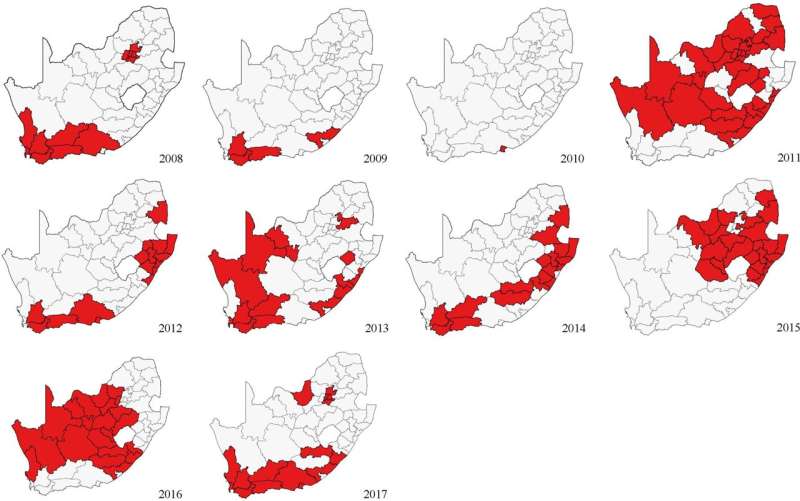Women, low earners ‘prone to disaster-linked depression’

Vulnerable groups in South Africa have a higher risk of disaster-induced depression, analysis suggests.
People living in communities affected by disasters in sub-Saharan Africa are more likely to experience depression, with women, black Africans and low earners most susceptible, analysis suggests.
Climate change is one of the most defining sustainable development challenges in the region and is causing increasingly frequent and intense weather events such as flooding and droughts.
South Africa recorded 54 natural disaster events from 2000 to 2019—the third highest in Africa after Kenya with 60 events and Mozambique with 55, according to the review by South African researchers.
Up until now, they say, country-level studies on the potential link between depression onset and community disasters in sub-Saharan Africa has been lacking. This prompted them to analyze data from 17,255 adults enrolled in the South African National Income Dynamics Study from 2008 to 2017 who were depression-free when the study began.
“The likelihood of depression due to community disaster exposure was particularly pronounced among females, black Africans and individuals with lower education or income,” says Andrew Tomita, lead author of the study published last month (6 April) in PLOS Climate.
“Although climate change is one of the key drivers of disasters, there is not enough attention in sub-Saharan Africa or large-scale evidence that speaks to the mental health impact of community disasters.”
Tomita, a senior lecturer at the University of KwaZulu-Natal’s School of Nursing and Public Health, in South Africa, tells SciDev.Net that the findings are consistent with evidence that exposure to stressful and catastrophic events such as flood, drought, mass unrest due to xenophobia and agricultural loss due to fire could lead to depression.
“It is also not a surprise to find the association between cumulative community disaster exposure and first onset of depression among certain socially vulnerable populations, given the South African historical context that is marked by the legacy of patriarchal social structures and persistent poverty,” Tomita says.
Garret Barnwell, an independent practice clinical psychologist based in Johannesburg, South Africa, adds that the study brings in new information as stressful events such as catastrophic floods and major loss of life leaves a long-lasting impact on communities without access to resources at a personal level.
Barnwell explains that most people in South Africa are not insured and have little savings.
There is a history of failing municipalities and failing infrastructure in relation to disasters, says Barnwell, who published a report last year on climate change and mental health in South Africa. He says people often feel abandoned as the burden of responsibility is shifted from communities to the individual, creating a heightened sense of insecurity.
“This is a well-executed study using two datasets considered reliable,” says Caradee Wright, a public health specialist leading the environment and health research group at the South African Medical Research Council.
“Disasters can certainly affect mental health so there is validity in conducting the study.”
Tomita says that children who are also vulnerable to disasters were not included because of a lack of data on depression during the study period.
Despite women and black Africans suffering more from disasters, he adds, they have fewer resources and support to help them cope psychologically.
He suggests timely access to community-based interventions for disaster survivors, with priority given to socially vulnerable groups.
“This makes sense since many of these groups will not have the means to cope with recovery after a disaster and this can lead to mental ill-health, such as depression,” agrees Wright.
The study recommends changes to disaster risk management policies and proposes food social grants that could cushion against income loss and crop loss resulting from disasters.
“[The study] helps to identify where investments should go and how we should be supporting people coming from these affected communities,” Barnwell adds.
Source: Read Full Article


